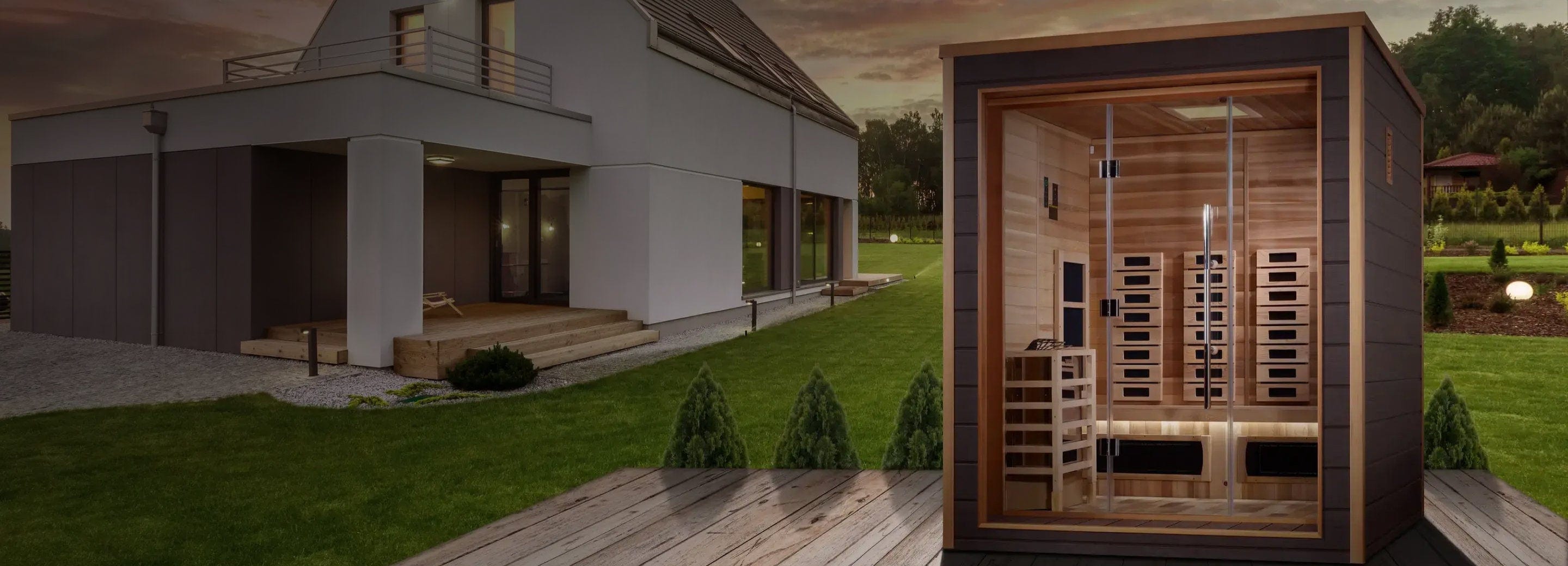Choose the Best Outdoor Sauna Kit for Your Backyard
Creating your ideal outdoor sauna begins with understanding wood construction methods that define superior craftsmanship. Traditional wood-fired models from Dundalk and SaunaLife feature thermally treated spruce and Canadian red cedar, materials that naturally resist moisture while maintaining structural integrity. The Finnish approach to sauna building emphasizes thick-wall construction ranging from 1.5" to 3.0", creating thermal mass that retains heat efficiently.
Electric heater systems from brands like Harvia and HUUM provide consistent temperature control between 140°F and 195°F, making them perfect for those who prefer convenience. These units plug directly into standard electrical systems, eliminating the need for wood storage or fire management while still delivering authentic sauna benefits.
To compare specific models, see our full lineup of barrel sauna kits that showcase the same curved-stave engineering in multiple sizes.
Barrel Sauna vs. Cabin Sauna: Understanding Design Differences
Barrel configurations from Golden Designs and Auroom utilize curved stave construction, promoting superior heat circulation. The rounded interior eliminates corners where cold air might collect, creating more even temperature distribution throughout the space. These designs accommodate 2-4 people comfortably while requiring minimal footprint.
Cabin-style units offer vertical walls and increased headroom, making them ideal for taller individuals or those who prefer more spacious environments. Glass-front options from True North and Haljas Houses create a visual connection with outdoor surroundings while maintaining thermal efficiency through advanced glazing techniques.
DIY enthusiasts can opt for our step-by-step DIY sauna kits, which ship with pre-cut panels, hardware, and illustrated instructions for a weekend build.
Premium Materials Define Long-Term Performance
Construction quality starts with lumber selection, where clear western red cedar provides natural antimicrobial properties and aromatic benefits. Nordic spruce offers exceptional thermal performance through its dense grain structure, while thermo-aspen delivers European-style aesthetics with enhanced durability. Key construction features include:
- Tongue-and-groove joinery for airtight assembly
- EPDM roofing systems engineered for weather resistance
- Hemlock interiors that remain cool to the touch
- Proper ventilation systems preventing moisture accumulation
Heating Technology: Wood-Fired vs. Electric Systems
Wood-burning stoves create the most traditional Finnish experience, where tending the fire becomes part of the ritual. These systems generate dry heat with occasional steam bursts when water meets hot stones, producing temperatures up to 195°F. Modern electric units from Finnmark and Maxxus provide precise temperature control without the maintenance requirements of wood-fired alternatives.
Infrared technology offers a different approach, using carbon-ceramic panels that heat the body directly rather than warming air. These systems operate at lower temperatures (120°F-160°F) while still providing therapeutic benefits through deep tissue penetration.
Frequently Asked Questions
Measure your area first. Cube saunas need a minimum of 4x4 feet, while barrel models require 6x8 feet. When planning placement, consider door swing clearance and ventilation access.
Yes, a level foundation prevents structural issues. Concrete pads work best, though reinforced decking suffices for smaller cube models. Proper drainage underneath prevents moisture problems.
Most barrel kits assemble in 6-8 hours with two people using basic tools. Cabin models, depending on size and complexity, may require 10-12 hours.
Wood-fired creates an authentic Finnish experience with dry heat and steam bursts. Electric heaters provide consistent temperature control without fire management or wood storage requirements.
Yes, properly insulated models with thick walls maintain heat efficiently in winter. Thermally treated wood construction resists freeze-thaw cycles while maintaining structural integrity.

